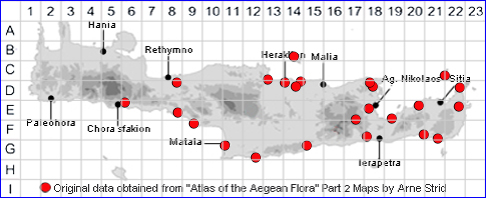
SPECIES DESCRIPTION
ANCHUSA AEGYPTIACA
Family:- BORAGINACEAE
Common Name:- Eastern anchusa.
Synomyns:- Asperugo aegyptiaca, Lycopsis aegyptiaca.
Meaning:- Anchusa (Gr) Strangler or close. A name given by the Greek playwright
Aristophanes to an alkanet yielding red dye.
Aegyptiaca (Gr) From Egypt, Egyptian.
General description:- Annual, hispid with stout, tubercle-based hairs.
Stems:-
a) 5-30 cm.
b) procumbent or ascending.
Leaves:-
1) Lamina:
a) 25-40 x 10-15 mm.
b) oblong-oval to lance-shaped.
c) margin toothed to somewhat undulate.
d) lower leaves with a grooved stalk.
e) upper, unstalked, half-clasping the stem, surface covered in pale wart-like
projections.
Flowers:-
1) Cymes:
a) very lax, leafy.
b) stalks (pedicels) 2-3 mm, elongating and recurved in fruit.
2) Bracts:
a) leaf-like.
b) exceeding the calyx.
3) Calyx:
a) c. 5 mm.
b) divided almost to the base into linear-lance-shaped, obtuse lobes.
4) Corolla:
a) tube c. 4 mm, straight, slightly shorter than the calyx.
b) pale yellow.
c) limb 3-5 mm diam., with 5 slightly unequal lobes.
d) stamens inserted at about the middle of the tube, 2 higher than the other 3.
Fruit:-
1) Nutlets:
a) 4-5 x 2-3 mm.
b) erect.
Key features:-
1) Corolla yellow.
2) Bracts exceeding flowers.
3) Nutlets 4-5 x 2-3 mm, erect.
Habitat:- Cultivated, fallow and waste ground, dry hillslopes in open shrubby areas,
sandy coastal habitats. 0-400 m.
Distribution:- S. Aegean Is. eastwards, including Cyprus. On Crete mainly
scattered around coastal regions.
.
Flowering time:- Mar to mid-May.
Photos by:- Steve Lenton
